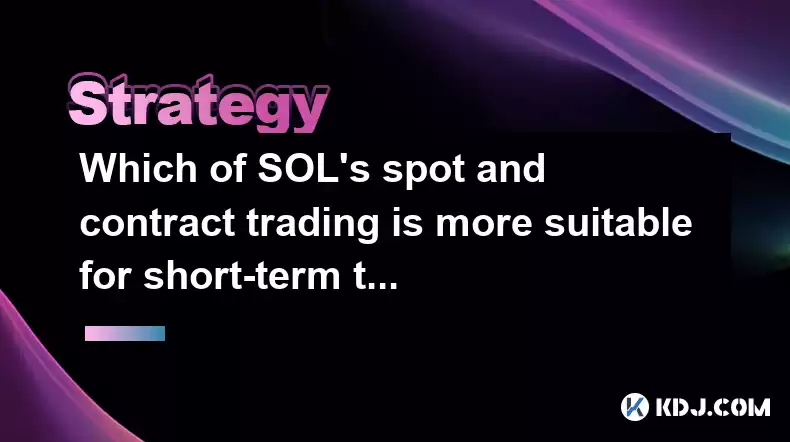-
 Bitcoin
Bitcoin $115100
1.27% -
 Ethereum
Ethereum $3675
2.71% -
 XRP
XRP $2.995
1.45% -
 Tether USDt
Tether USDt $1.000
0.02% -
 BNB
BNB $769.8
2.64% -
 Solana
Solana $168.0
3.25% -
 USDC
USDC $0.9999
-0.01% -
 TRON
TRON $0.3371
1.48% -
 Dogecoin
Dogecoin $0.2051
3.36% -
 Cardano
Cardano $0.7394
2.30% -
 Hyperliquid
Hyperliquid $38.15
0.42% -
 Stellar
Stellar $0.3966
-0.36% -
 Sui
Sui $3.486
2.93% -
 Chainlink
Chainlink $16.72
2.52% -
 Bitcoin Cash
Bitcoin Cash $568.0
4.36% -
 Hedera
Hedera $0.2440
2.59% -
 Ethena USDe
Ethena USDe $1.001
0.04% -
 Avalanche
Avalanche $22.16
2.06% -
 Litecoin
Litecoin $119.1
-0.73% -
 UNUS SED LEO
UNUS SED LEO $8.991
0.04% -
 Toncoin
Toncoin $3.232
-0.39% -
 Shiba Inu
Shiba Inu $0.00001233
2.82% -
 Uniswap
Uniswap $9.717
2.53% -
 Polkadot
Polkadot $3.664
1.85% -
 Dai
Dai $1.000
0.01% -
 Monero
Monero $281.2
-3.89% -
 Bitget Token
Bitget Token $4.350
1.55% -
 Cronos
Cronos $0.1428
5.07% -
 Pepe
Pepe $0.00001050
3.68% -
 Aave
Aave $262.3
3.54%
Which of SOL's spot and contract trading is more suitable for short-term trading?
For short-term SOL trading, spot trading suits beginners due to its simplicity and lower risk, while contract trading is better for experienced traders seeking higher returns with leverage.
Apr 21, 2025 at 06:00 pm

Which of SOL's spot and contract trading is more suitable for short-term trading?
When it comes to short-term trading of Solana (SOL), traders often face the dilemma of choosing between spot and contract trading. Each method has its own set of characteristics that can either enhance or hinder a trader's strategy. In this article, we will delve into the specifics of both spot and contract trading for SOL, analyzing which might be more suitable for short-term trading based on various factors such as liquidity, leverage, risk management, and execution speed.
Understanding Spot Trading of SOL
Spot trading involves buying and selling SOL directly for immediate delivery. In the context of short-term trading, spot trading is straightforward and typically involves less risk than contract trading because it does not involve leverage.
Liquidity: Spot markets for SOL usually have high liquidity, which is beneficial for short-term traders who need to enter and exit positions quickly. High liquidity means smaller spreads and less slippage, which are crucial for short-term trading profitability.
Risk Management: Since spot trading does not use leverage, the risk of significant losses is lower. Traders can only lose the amount they have invested, making it a safer option for those new to short-term trading.
Execution Speed: Spot trades are executed immediately, which is advantageous for short-term traders who need to act on market movements swiftly.
Understanding Contract Trading of SOL
Contract trading, on the other hand, involves trading futures or options contracts based on the price of SOL. This type of trading is more complex and often used by experienced traders who are comfortable with higher risk and leverage.
Leverage: One of the main attractions of contract trading is the ability to use leverage. This means traders can control a larger position with a smaller amount of capital. For short-term traders, this can amplify potential profits but also significantly increase potential losses.
Liquidity: While the liquidity for SOL futures and options can be high, it may not always match the liquidity of spot markets. This can lead to larger spreads and more slippage, which can be detrimental to short-term trading strategies.
Risk Management: Contract trading requires more sophisticated risk management strategies due to the use of leverage. Traders must be vigilant about setting stop-loss orders and managing their positions to avoid significant losses.
Execution Speed: Contract trades can be executed quickly, similar to spot trades. However, the added complexity of managing leveraged positions can sometimes slow down decision-making.
Comparing Spot and Contract Trading for Short-Term SOL Trading
When comparing spot and contract trading for short-term trading of SOL, several key factors need to be considered:
Profit Potential: Contract trading offers higher profit potential due to leverage. However, this comes with increased risk. Spot trading, while offering lower profit potential, provides a more stable and predictable trading environment.
Risk Exposure: Spot trading is generally safer due to the absence of leverage. Contract trading, with its leverage, can lead to significant losses if the market moves against the trader.
Complexity: Spot trading is simpler and more straightforward, making it easier for beginners to understand and execute. Contract trading requires a deeper understanding of financial instruments and risk management techniques.
Market Conditions: The choice between spot and contract trading can also depend on current market conditions. In highly volatile markets, contract trading might be more suitable for those looking to capitalize on rapid price movements. In more stable markets, spot trading might be more appropriate for its lower risk and ease of use.
Practical Considerations for Short-Term SOL Trading
For traders considering short-term trading of SOL, here are some practical considerations:
Choosing a Platform: Select a trading platform that offers both spot and contract trading for SOL. Ensure the platform has high liquidity, low fees, and a user-friendly interface.
Setting Up:
For Spot Trading:
- Log into your trading platform.
- Navigate to the SOL spot trading section.
- Place a buy or sell order at the current market price or set a limit order at a specific price.
- Monitor your position and decide when to close it based on your trading strategy.
For Contract Trading:
- Log into your trading platform.
- Navigate to the SOL futures or options section.
- Choose the contract type and leverage level.
- Place a buy or sell order for the contract.
- Set stop-loss and take-profit orders to manage risk.
- Monitor your position closely and adjust as necessary.
Risk Management: Regardless of the trading method, always have a clear risk management plan. For spot trading, this might mean setting a maximum amount to risk per trade. For contract trading, it could involve setting strict stop-loss orders and monitoring margin levels.
Which is More Suitable for Short-Term Trading?
For short-term trading of SOL, the choice between spot and contract trading depends largely on the trader's experience, risk tolerance, and trading strategy.
For Beginners: Spot trading is likely more suitable due to its simplicity and lower risk. Beginners can focus on learning market dynamics and honing their trading skills without the added complexity of leverage.
For Experienced Traders: Contract trading might be more suitable for those who are comfortable with higher risk and have a solid understanding of leverage and risk management. Experienced traders can use contract trading to potentially amplify their returns on short-term market movements.
Frequently Asked Questions
Q1: Can I switch between spot and contract trading on the same platform?
A1: Yes, many trading platforms offer both spot and contract trading options for SOL. You can switch between the two types of trading within the same platform, though you might need to transfer funds between different accounts or sections of the platform.
Q2: How does the cost of trading differ between spot and contract trading for SOL?
A2: Spot trading typically involves lower fees than contract trading. Spot trading fees are usually transaction-based, whereas contract trading fees can include not only transaction fees but also funding fees for holding leveraged positions overnight.
Q3: Is it possible to hedge my spot positions with SOL contracts?
A3: Yes, you can use SOL futures or options contracts to hedge your spot positions. For example, if you hold a long position in SOL on the spot market, you can take a short position in SOL futures to hedge against potential price drops.
Q4: How does the tax treatment differ between spot and contract trading of SOL?
A4: Tax treatment can vary by jurisdiction, but generally, profits from spot trading are often treated as capital gains, while profits from contract trading might be considered as income from trading activities, potentially leading to different tax rates and reporting requirements. Always consult with a tax professional for specific advice.
Disclaimer:info@kdj.com
The information provided is not trading advice. kdj.com does not assume any responsibility for any investments made based on the information provided in this article. Cryptocurrencies are highly volatile and it is highly recommended that you invest with caution after thorough research!
If you believe that the content used on this website infringes your copyright, please contact us immediately (info@kdj.com) and we will delete it promptly.
- Cryptos with ROI Potential: BlockDAG Leading the Charge
- 2025-08-07 04:50:14
- OZAK AI: Is This AI Product Poised for ChatGPT-Level Returns?
- 2025-08-07 03:30:13
- Cryptos to Watch: Cold Wallet's Rewarding Edge Over Tron
- 2025-08-07 04:12:40
- SEC, Liquid Staking, and Crypto: A New Dawn?
- 2025-08-07 03:30:13
- Cold Wallet, Crypto Picks, 2025: Hype or the Real Deal?
- 2025-08-07 04:19:02
- Ethena Gains, VeChain, and CWT Token: What's the Buzz?
- 2025-08-07 04:20:13
Related knowledge

How to avoid common crypto investment mistakes?
Jul 13,2025 at 01:35am
Understanding the Risks of Crypto InvestmentInvesting in cryptocurrency can be highly rewarding, but it also comes with significant risks. One of the ...

What is a long-short crypto strategy?
Jul 15,2025 at 10:56am
Understanding the Basics of a Long-Short Crypto StrategyA long-short crypto strategy is an investment approach where traders simultaneously take long ...

What is a long-short crypto strategy?
Jul 11,2025 at 01:28pm
Understanding the Basics of Long-Short Crypto StrategyA long-short crypto strategy is an investment approach where traders take both long and short po...

How to use the RSI indicator for crypto?
Jul 12,2025 at 03:56pm
Understanding the RSI Indicator in Cryptocurrency TradingThe Relative Strength Index (RSI) is a momentum oscillator used to measure the speed and chan...

Is copy trading a good strategy for crypto beginners?
Jul 12,2025 at 08:28am
Understanding Copy Trading in the Cryptocurrency MarketCopy trading is a strategy where novice traders replicate the trades of experienced investors a...

How to build a crypto portfolio with $1000?
Jul 13,2025 at 08:14pm
Understanding the Basics of Cryptocurrency InvestmentBuilding a crypto portfolio with $1000 starts with understanding the fundamentals of cryptocurren...

How to avoid common crypto investment mistakes?
Jul 13,2025 at 01:35am
Understanding the Risks of Crypto InvestmentInvesting in cryptocurrency can be highly rewarding, but it also comes with significant risks. One of the ...

What is a long-short crypto strategy?
Jul 15,2025 at 10:56am
Understanding the Basics of a Long-Short Crypto StrategyA long-short crypto strategy is an investment approach where traders simultaneously take long ...

What is a long-short crypto strategy?
Jul 11,2025 at 01:28pm
Understanding the Basics of Long-Short Crypto StrategyA long-short crypto strategy is an investment approach where traders take both long and short po...

How to use the RSI indicator for crypto?
Jul 12,2025 at 03:56pm
Understanding the RSI Indicator in Cryptocurrency TradingThe Relative Strength Index (RSI) is a momentum oscillator used to measure the speed and chan...

Is copy trading a good strategy for crypto beginners?
Jul 12,2025 at 08:28am
Understanding Copy Trading in the Cryptocurrency MarketCopy trading is a strategy where novice traders replicate the trades of experienced investors a...

How to build a crypto portfolio with $1000?
Jul 13,2025 at 08:14pm
Understanding the Basics of Cryptocurrency InvestmentBuilding a crypto portfolio with $1000 starts with understanding the fundamentals of cryptocurren...
See all articles

























































































